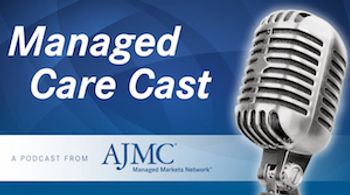
Technology
Latest News
Latest Videos

CME Content
More News

Nearly 40% of US ambulatory care practices are “under-users” of health information technology functionalities, which impacts the ability of the health system as a whole to provide coordinated, efficient care.

Artificial intelligence (AI) can be trained with data sets to recognize patterns and improve healthcare outcomes. But first, healthcare needs to get better at using normal intelligence to solve problems, said panelists at the JP Morgan Healthcare Conference in San Francisco, California.

Draft framework from the Office of the National Coordinator on Health IT seeks to build a single on-ramp to advance interoperability in the United States through the Trusted Exchange Framework.

Coverage of our peer-reviewed research and news reporting in the healthcare and mainstream press.

EBOTM covers challenges with electronic health records to the opportunities for improving the transition to value-based care.

This week, the top managed care stories included the elimination of the Affordable Care Act's individual mandate; a new gene therapy for inherited vision loss that could cost $1 million; and a study found that social isolation can increase the risk of type 2 diabetes.

Electronic health records can be used to measure and record how guidelines are being implemented and followed, but more government intervention is needed to regulate electronic health records and set standards, Derek Raghavan, MD, PhD, FACP, FRACP, president, Carolinas HealthCare System's Levine Cancer Institute.

The future is bright with technological innovation intended to improve every corner of our lives and, accordingly, there has been a virtual explosion in advancements designed to address the many challenges faced by patients, hospitals, and healthcare professionals.

Researchers at Duke University found there is substantial room for improvement in providing consumers with ready access to healthcare prices online.

CMS is focusing on patient empowerment and unburdening physicians, said CMS Administrator Seema Verma during her keynote speech at the Office of the National Coordinator for Health Information Technology’s Annual Meeting.

A collaboration founded by the American Medical Association (AMA) will bring together organizations like IBM, Cerner, Intermountain Healthcare, the American Heart Association, and the American Medical Informatics Association to improve patient care through a better way to organize and share healthcare information.

A recap of abstracts presented at The American College of Rheumatology’s 2017 Annual Meeting, including an analysis of data available in an electronic health records database and outcomes and cost effectiveness of sarilumab.

A practice must be prepared for any disruption of the electronic medical record, and have a plan in place, even if it doesn't occur often, saidTeri Kovach, RN, OCN, compliance officer and charge nurse at Salish Cancer Center.

Technology, specifically the electronic medical record, is becoming more prevalent in the healthcare industry; however, there are significant cybersecurity risks due to the major information shift.

While technology and electronic health records will one day be used in a variety of ways can help improve the delivery of care to patients, this may take a long time, said Bobby Green, MD, MSCE, senior vice president of clinical oncology at Flatiron Health.

Getting people on board when a new electronic health record (EHR) is being implemented is one of the biggest obstacles to overcome and is important for the success of the new EHR, said Teri Kovach, RN, OCN, compliance officer and charge nurse at Salish Cancer Center.


There is a lot of evolution happening in healthcare in a number of areas, including policy, technology, and the market, explained Deanne Kasim, founding partner of Santesys Solutions.

The results following the implementation of the Health Information Technology for Economic and Clinical Health (HITECH) Act of 2009 suggest its potential to be a model for other countries to follow when introducing new, valuable technologies.

eClinicalWorks is due to pay $155 million to settle a claim alleging that the company violated the False Claims Act, as announced by the Department of Justice on May 31.

Danny Sands, MD, and Mandi Bishop discuss use of technology to communicate with patients, medical informatics, participatory medicine, and more.

Michael Petersen, MD, of Accenture Health, discusses the opioid epidemic and how data analytics can be used to break down the silos in healthcare to better care for people addicted to opioids and to prevent further spread of the epidemic.


Healthcare organizations really need to be careful that the protected health information flow is safe and there are no vulnerable spots where that information can be accessed and cause a HIPAA violation, explained Lee Barrett, executive director of the Electronic Healthcare Network Accreditation Commission.

There are 2 main ways big data has helped to advance cancer care, but the lack of interoperability in the United States limits some of the data that can be analyzed for quality purposes, explained Bobby Green, MD, MSCE, senior vice president of clinical oncology at Flatiron Health.


















































